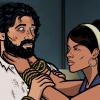Which Mooneys had the best wings and airframes?
-
Members Online
- Jake@BevanAviation
- N201MKTurbo
- dkkim73
- 47U
- Jim F
- Microkit
- Torello404
- LANCECASPER
- ta2too
- CAV Ice
- kaba
- mariosmt
- Rwsavory
- ottorecker
- Fly Boomer
- gevertex
- bcg
- Rmfriday
- DanM20C
- hnorber
- DSAV
- BenjaminK
- mooneydemi
- 201Mooniac
- eman1200
- Shadrach
- toto
- 00-Negative
- ArtVandelay
- bdserv
- Jetpilot86
- richardbrochu27
- EKoS
- Rmnpilot
- Andy95W
- TCC


Recommended Posts
Join the conversation
You can post now and register later. If you have an account, sign in now to post with your account.